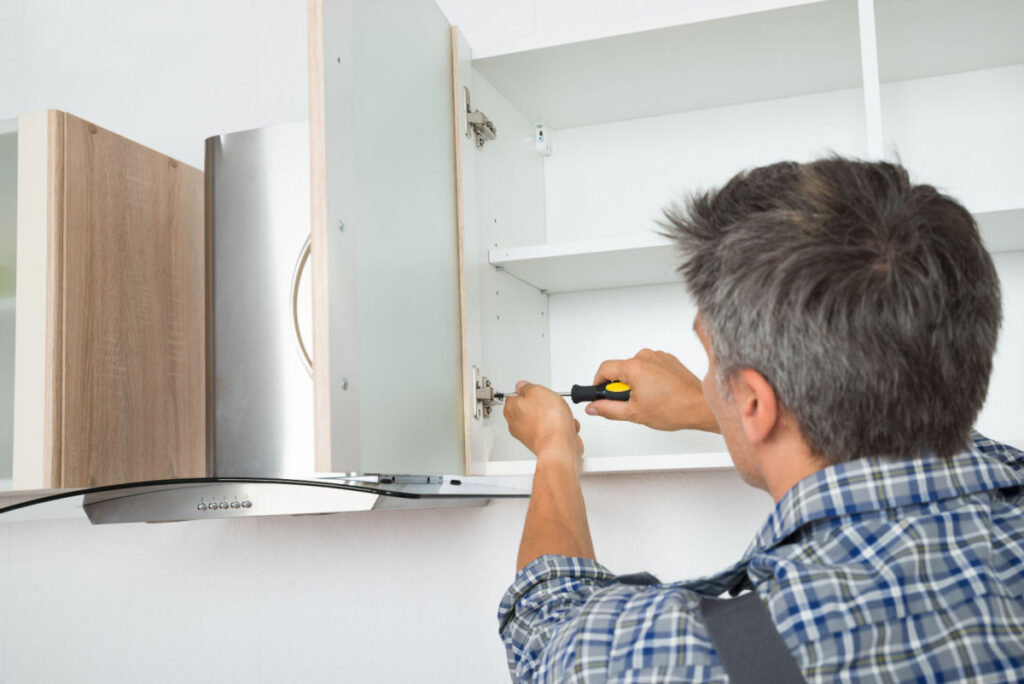
Are you thinking about installing kitchen cabinets in your home? If so, you may wonder whether you should install top or bottom kitchen cabinets first. This dilemma is common among homeowners who want to complete cabinet installation independently.
When you decide to install kitchen cabinets, ensure you have the tools and materials you need and clear instructions. As the leading installer of custom wood cabinets in Bucks County, PA, Capital Kitchen Refacing has the answer for whether to install top or bottom kitchen cabinets first and how to approach them.
Whether you need expert kitchen cabinet refacing or have an idea for custom wood cabinets, our team of professionals can give you the kitchen of your dreams. Here are the steps to install kitchen cabinets on your own time.
How to Install Kitchen Cabinets
Your initial thought may be to install cabinets on your own, which you can certainly do if you are particularly handy and want to save some cash. Choosing pre-stock cabinets and making the installation could save you money, but if you want the best looks and quality, it might be best to turn to the pros.
Another option is to complete kitchen cabinet refacing, which includes an installer removing the doors and drawers and laminating the cabinet boxes in a new color, style, and material. In addition, each cabinet gets a new wood veneer and hardware, such as hinges, handles, and drawer pulls.
Preparing for Cabinet Installation
Before heading to Home Depot or your local home improvement store, prepare the space and get accurate measurements. Then, once you’ve removed your existing cabinets, create a checklist of things you should address moving forward. For example, when wondering whether to install top or bottom kitchen cabinets first, you want to start your process with the upper cabinets.
Buy Cabinets
Home improvement stores will generally have an expert check your measurements and sketches to match them to the right cabinet door and drawer. For example, a 60-inch space may require a 60-inch cabinet or two 30-inch cabinets.
Buying cabinets depends on your specific needs, and a professional can help ensure you get what you want. Then, you can start the installation process if your measurements are accurate and you have the necessary tools.
Install Upper Cabinets
When questioning whether to install top or bottom kitchen cabinets first, you should always install the upper cabinets before the lower ones. We recommend doing this so you won’t have to work over the lower cabinets and risk damaging them.
Ensure you have the right screw to install the wall cabinets. Installing a French cleat or screwing through the back of the cabinets are the two most common ways to do it.
If your cabinets aren’t resting against the ceiling, establish a line on the wall against which to mount your cabinets. To complete this step, measure 36 inches above the floor for average countertop height, then add 18 inches.
Use a stud finder to locate the wall studs. Then, with a pencil, mark their locations above and at least 6 inches below the mark you’ve made for the bottom of the wall cabinets.
Install Lower Cabinets
Now that you’ve completed your upper cabinets, proceed to install the lower cabinets. Begin by removing all doors, drawers, and shelves to lighten the cabinets and prevent damage. We also recommend creating a mockup of the layout before installing the cabinets to the wall, so you know where the top of the base cabinets will be.
Start by laying out all the base cabinets other than the sink cabinet. For the sink, get a measurement of the plumbing, transfer it to the back of the cabinet, then use a drill to cut the holes. Once you’ve cut the holes, slide the base into place.
After you mock up the bases, it’s necessary to shim the studs to ensure the cabinet fronts connect to each other. Use wedge shims at each point where you marked a stud, and manipulate each cabinet’s depth until the cabinet fronts line up. Once satisfied with the result, use trigger clamps to attach the cabinets and screw the cabinets to one another.
Use the level to check the tops of the cabinets’ front and back before attaching them to the wall. When it comes time to install countertops, they should be level. If a spot is low, use the wedge shims on the floor to raise it slightly. Then, tack the shims in place to keep them from moving.
Double-check each shim, then screw through the back of the cabinets and each shim, and continue into the stud. To check for absolute uniformity, place a level along the front of the cabinets. Make any final adjustments by pulling screws and adjusting shims one at a time until you’re satisfied with the result.
Contact Us for Kitchen Cabinet Installation Today!
At Capital Kitchen Refacing, we have a team of experienced professionals who can help you make your kitchen design ideas a reality. Whether you need advice on installing top or bottom kitchen cabinets first or want to complete kitchen cabinet refacing, we’re ready to help.
We have a staff of experienced professionals for refacing cabinets and installing new ones for indoor and outdoor kitchens. Check out our selection of StarBoard outdoor cabinets and contact us to schedule your kitchen cabinet installation today!